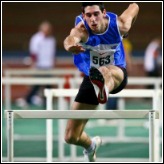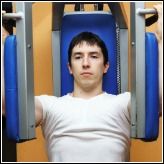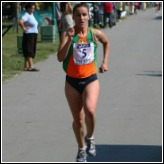Beginner Strength Training - Exercise Selection and Terminologies

Every elite sport person was at one time a beginner strength training athlete. When you first stepped into the gym there are a lot of things for you to understand. Chief among these is to understand the various terminologies that are used in strength training circles.
In addition, you also needed to know how to make your exercise selection. Some athletes fail to realize that how they introduce their bodies to exercise is vitally important not only to their performance but also to their health and well being.
Beginner Strength Training
How many times have you seen people walk into a gym for the first time and based on what their mates are doing or worst still what they have read in the latest issues of “Massive Muscle Magazine” this becomes their point of entry into the world of strength training.
The next time you see them - if you see them in the gym ever again - they are walking around like one of those zombies in the “Michael Jackson’s thriller video”, suffering from severe DOMS (Delayed Onset of Muscle Soreness).
It would seem that no one told them that workouts which are appropriate for advance athletes are totally inappropriate for a novice strength training athlete.
You will also need to decide whether you are in the gym for strength training or body building? For a beginner strength training athlete the two can become confused and understanding the distinction between the two will guide the philosophy behind how you train.
If you are a sport person beginning strength training as a means to improvement in your sport, you need to understand that bodybuilding is probably the least effective way of training for strength. Most sports movements have to be produced within a very limited time frame. Body building methods tend to develop strength with slow contraction speeds. This type of strength does not transfer well from the weight room to the sport arena.
Strength Training Terminology
There are many things you need to know when you are a beginner strength training athlete. One of these is the understanding you have of the unique language of the sport - by that I mean the terminologies that are used. Everyone in the field need to have a common understanding of these so that when they are referred to, we all know what is meant by them.
These are some of the most common strength training terminology with there meanings:
- Repetition - A single movement of an exercise
- Set – A defined series of repetitions
- Volume – The total amount of work performed in a set or workout
- Load – Mass being lifted
- Intensity – Measure of work rate normally expressed in percentages
- Repetition Maximum (RM) – The maximum number of repetition in a given set
- Overload – A process by which the body is progressively stressed and force to adapt
- Concentric Contractions – The shortening of muscle fibers to cause the movement of limbs (normally referred as contracting)
- Eccentric Contractions – The lengthening of a muscle while it is trying to shorten i.e. contract (normally referred to as yielding)
Exercise Selection
As a beginner strength training athlete almost any exercise will cause you to become stronger, even those with limited loads. Exercises utilizing only body weight can be a very useful way of introducing your body to strength training – especially to the young. Appropriate activities for body weight exercises can be the following:
- Press Ups
- Sit Ups
- Back Raise
- Side Raise
- Hip Raise
- Triceps Press Ups
- Free Standing Squats
- Calf Raise
However, body weight exercises are limited in the continuing development of strength. After a short while you will become accustomed to these exercises. The overload principle (referred to above) cannot be applied due to the constant weight of your body. It is from this point that lifting weights should be seriously applied in your training and where strength will now develop at an accelerated pace.
As a beginner strength training athlete your choice of exercises should be dictated by your sport. Put simply, you should concentrate on training the muscles that perform the actions of the sport (remember you are not body building). The following suggestions are how you might go about doing that:
- Analyze the skills of the sport or event. You should do this in terms of limb position, direction and angle.
- Decide which of the muscles are involved to make those movements happen. Also are they contracting or yielding?
- Select exercises which involve those muscles. This should be based on the similarity of the movement and the angle of the contraction.
Initially it is o.k. to train using standard weight lifting exercises such as bench press, squats or leg extensions. These exercises are perfectly adequate at the beginning of the strength training process as they develop strength in gross/global terms. But as you improve over time, exercises will need to become more and more specific.
So for example, if you are a sprinter wanting to improve your sprint start, rather than perform just a squat, why not perform a reverse single leg push using a leg press machine – ensuring your back is positioned at the correct angle as you push powerfully backward and away from you.
Below are some examples of general exercises which could be use for various body parts. You would make your choices based on whether that particular exercise works the muscle according to the movement of the sport.
| Upper Body | Shoulder Shrugs, Front Lat Pull Downs, Overhead Press Bicep Curls, Front Pull-ups Triceps Extensions, Dips, Kickbacks Incline/Bench Press, Press-ups, Pec-Deck Machine |
| Trunk | Good Morning, Back Extensions, Back Lat Pull Downs Crunches, Leg Raise, Oblique Twists, Pelvic Tilts |
| Lower Body | Squats, Toe Raise, Dead lifts, Leg Curls, Leg extensions |
How Often Should You Train?
- Training should be carried out 2-3 times per week.
- In any single training session or workout, you should pick only two to three exercises from each category.
With the number of exercises in each category, you can change the exercises executed in each session but still deliver a workout for that body part. This will ensure variety, a slight change of stimulus and you will cover all your bases.
Sign Up For The Latest Track And Field News And Improve Your Athletic Performance!
From
"Beginner Strength Training" To "Faster,
Stronger, Better – Your Shortcut To Improved Athletic Performance"
Learn more about strength training exercises







